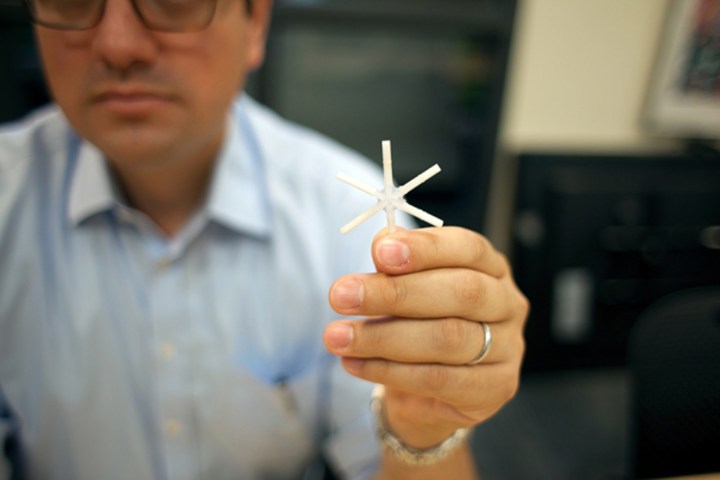
People do not like taking medication, even seeming to willfully forget when doctors prescribe repeated doses. This makes treating diseases like malaria and Alzheimer’s complicated. Inconvenience or memory lapses overcome strict dosing regimens. Doctors and patients need a long-term delivery method that is safe and effective, so people can just swallow and forget.
To this end, a team led by Dr. Giovanni Traverso and Dr. Robert Langer developed a long-term drug delivery capsule that sits in the stomach, slowly releasing medication for up to two weeks. The innovative star-shaped design can be conveniently folded into a capsule and hold weeks — or even a month’s — worth of medication in its six limbs.
“The team attempted many approaches and tested a range of shapes including the star and hexagon shown in our paper in Science Translational Medicine,” Traverso told Digital Trends. “The optimal shape and configuration of the dosage form was selected based on its performance based on ease of encapsulation, manufacturability, gastric stability and drug release properties.”
The current design features a six-sided star that is folded into a pill. Once the capsule enters the stomach, acid dissolves the outer layer and the arms stretch out. The star’s size and design keeps it from being digested further beyond the stomach until the desired time period, which was successfully demonstrated in testing on pigs.
Progress did not come easy, though.
“There were several challenges that had to be addressed,” Traverso said, “including safe prolonged gastric residence, protection of the drug in the gastric environment, encapsulation of a shape capable of being resident in the stomach for prolonged periods of time.”
A spinoff company, Lyndra, has been developed to advance the technology. The company will focus on diseases such as HIV, diabetes, and epilepsy, which would benefit from long-term drug delivery. Human trials are set to begin in 2017.


